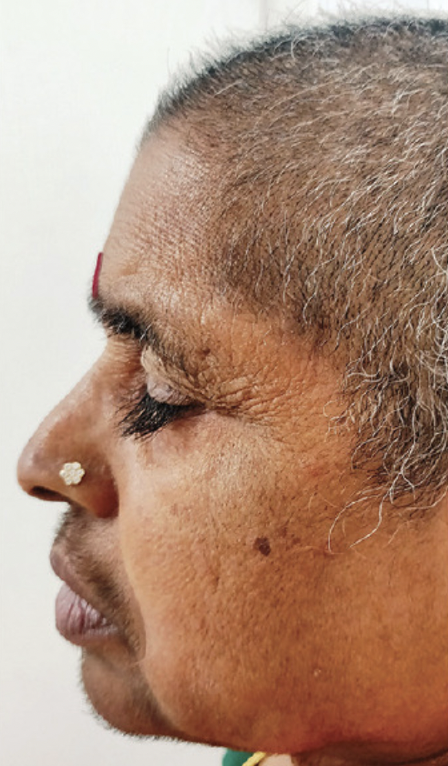Trichomegaly from Cancer Drugs: A look at EGFR Inhibitors
Eyelash Hypertrichosis (Trichomegaly) from EGFR Inhibitors
Eyelash trichomegaly is a condition that is defined as increased length (more than 12 mm), curling, pigmentation or thickness of eyelashes. There is a long list of conditions that are associated with trichomegaly including congenital syndromes, acquired conditions and certain medications.
I have reviewed this under “Eyelash Trichomegaly: A Closer Look at Eyelash Hypertrichosis”
Under the medication category, epidermal growth factor receptor inhibitors (EGFR inhibitors) that are used in the treatment of solid tumors are associated with trichomegaly. These drugs cause enhanced terminal differentiation of hair, and this can occur anytime after 2-5 months of treatment. It can also be associated with hypertrichosis in other areas of the face and may resemble hirsutism.
Inamdar and Kumar. 2022
Inamdar and Kumar recently reported a 60 year old post-menopausal woman who presented with an 8 year history of longer eyelashes. In addition to being longer, the eyelashes were thick, dark and curly and measured 23 mm at the center and 15 mm at the periphery. This suggested trichomegaly.
In addition to the eyelash changes, the patient had increased vellus hair above the lips and on the chin suggesting hypertrichosis.
Further evaluation showed that the patient was using the chemotherapeutic agent Erlotinib for the past 8 years for treatment of non-small cell lung carcinoma. Erlotinib is known to competitively bind to the tyrosine kinase domain of Epidermal Growth Factor Receptor inhibiting receptor activation and blocking the signal transduction. The drug impairs the transition of hair growth from anagen to telogen phase, leading to prolonged anagen phase. Trichomegaly is seen after 2–5 months of treatment. EGFR inhibitors can trigger hair growth in other areas of the body besides the eyelashes.
Trichomegaly (longer eyelashes) and hypertrichosis in a patient receiving The EGFR inhibitor chemotherapy medication Erlotinib. Inamadar S and Kumar NSP. Lady with Long Eyelashes… Int J Trichology. Mar-Apr 2022;14(2):71-72. Image shown with creative commons license.
Comment and Discussion
This report is a nice reminder of this important side effect of EGFR inhibitory drugs. IN fact, hair growth disorders are common with EGFR inhibitors and use of these drugs are frequently associated with skin related side effects termed the “PRIDE” complex. This is short for papulopustules and/or paronychia, Regulatory abnormalities of hair growth, Itching, Dryness due to EGFR inhibitors.
Trichomegaly may be obvious on examination or to the patient in many cases. Patients report needing to trim the eyelashes so that they can see or in order to avoid hairs going in the eyes and giving irritation, infections and rarely corneal ulcers. An important pearl for clinicians is that patients with trichomegaly who complain of eye symptoms should be referred to an eye doctor for full review. Trichiasis and secondary corneal ulceration is a very real concern.
Many of the EGFR inhibitors carry a side effect of trichomegaly. This includes cetuximab, erlotinib, gefitinib and panitumumab.
Hair growth occurs 2-5 months after starting treatment. It is reversible once treatment is stopped.
REFERENCE
Inamadar S and Kumar NSP. Lady with Long Eyelashes… Int J Trichology. Mar-Apr 2022;14(2):71-72.
This article was written by Dr. Jeff Donovan, a Canadian and US board certified dermatologist specializing exclusively in hair loss.

